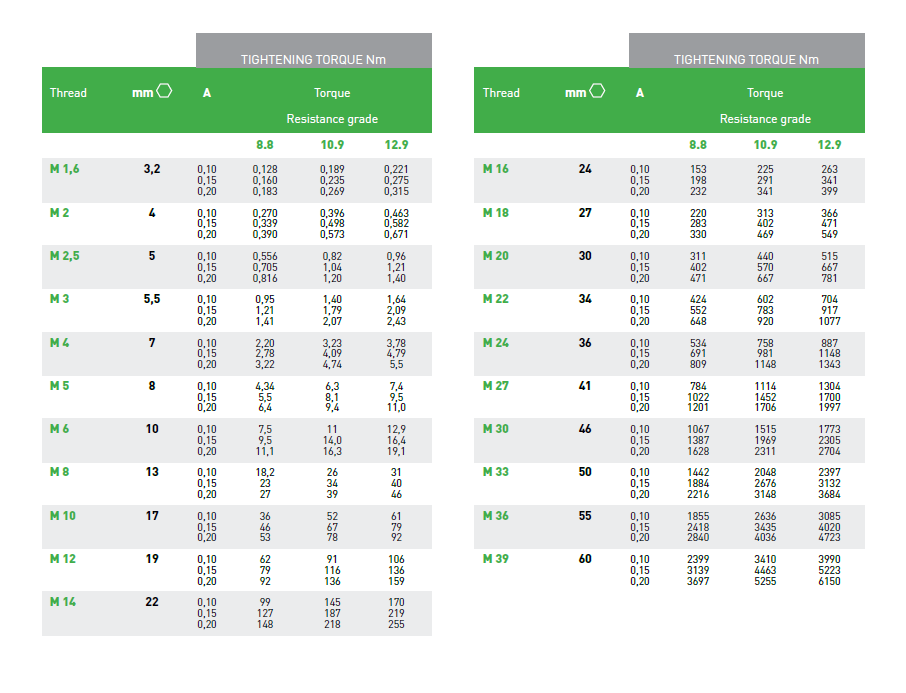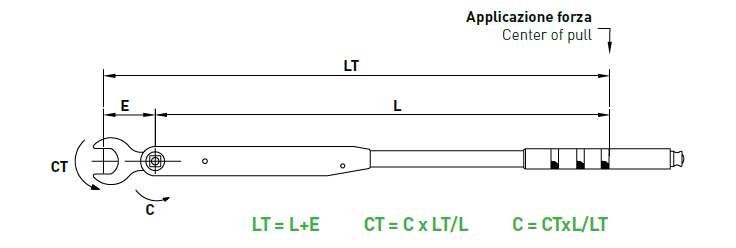TENSILE LOAD AND TIGHTENING TORQUE FOR NUTS AND BOLT
To obtain effective connections is necessary that the tighten fastener is submitted and makes an optimal tensile load:
- undertight fastener can work loose;
- overtight fasteners may distort components or shear.
In the chart that follows it’s possible to find the fastener and to define the tightening torque. For each measure of fastener are specified differents values in accordance to the resistance grade and according to an appropriate coefficient that considers the friction of the under head and of the thread:
- coefficient 0,10: tightening torques for phosphated or galvanized fasteners with thorough lubrication.
- coefficient 0,15: tightening torques for black or galvanized fasteners with minimal lubrication.
- coefficient 0,20: tightening torques for coated or bright fasteners fitted dry.
Example:
To determine the fastener diameter knowing the tensil load:
| FASTENER | 8.8 GRADE |
| COEFFICIENT A |
0,15
|
Consulting the chart select a TIGHTENING TORQUE of 46 Nm.
For cases not specified in the chart, use the formula: M= F x D / 5300
M= tightening torque in Nm
F= loaded traction in N
D= faster diameter in mm
TABLE
(A = bolt head friction coefficient)

FORMULA FOR CALCULATING THE CORRECT TORQUE USING SPECIAL INTERCHANGEABLE HEADS
Use of torque wrench with special interchangeable heads requires the calculation of the correct torque to be set on the torque wrench to obtain the desired torque.

LT= Total length (from interchangeable head to center of handle, force application point).
L = Standard torque wrench length (from square drive to center of handle, force application point).
E = Interchangeable head length.
CT = Desired torque.
C = Set torque.
